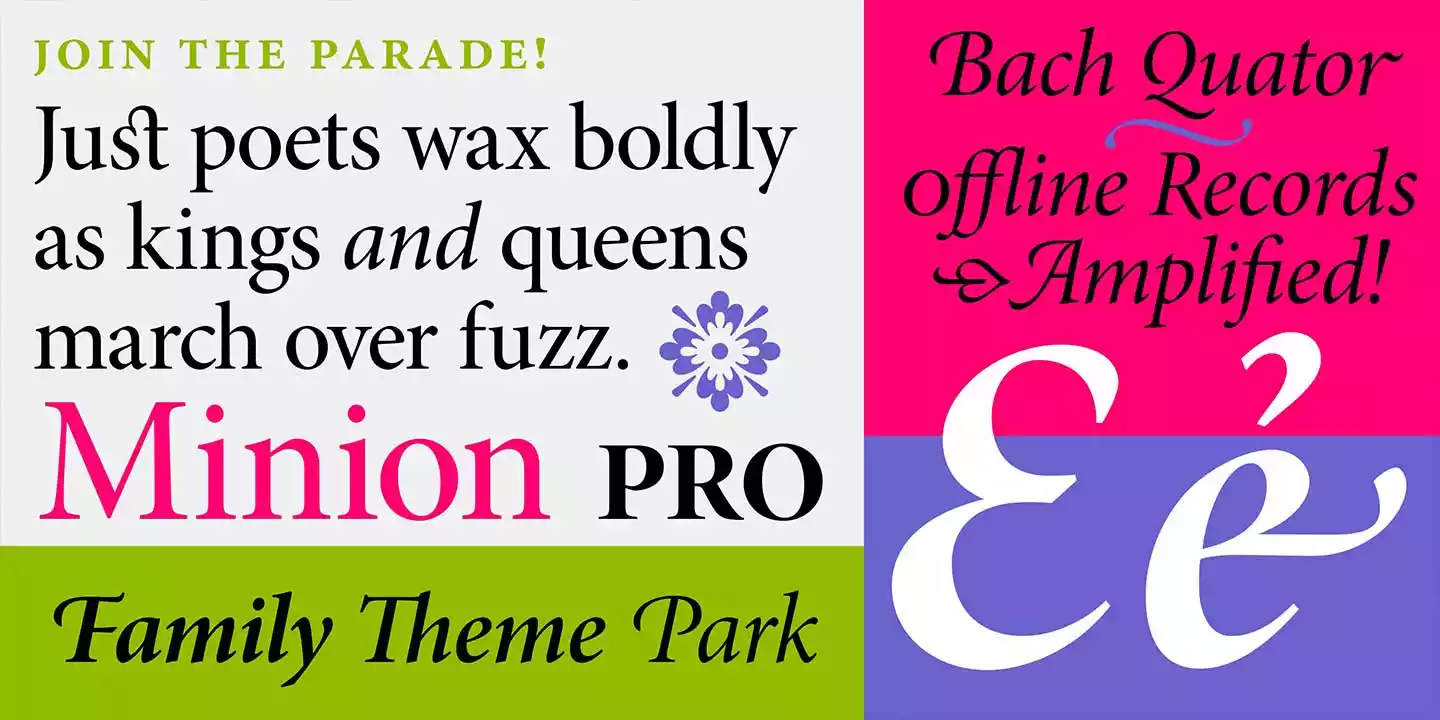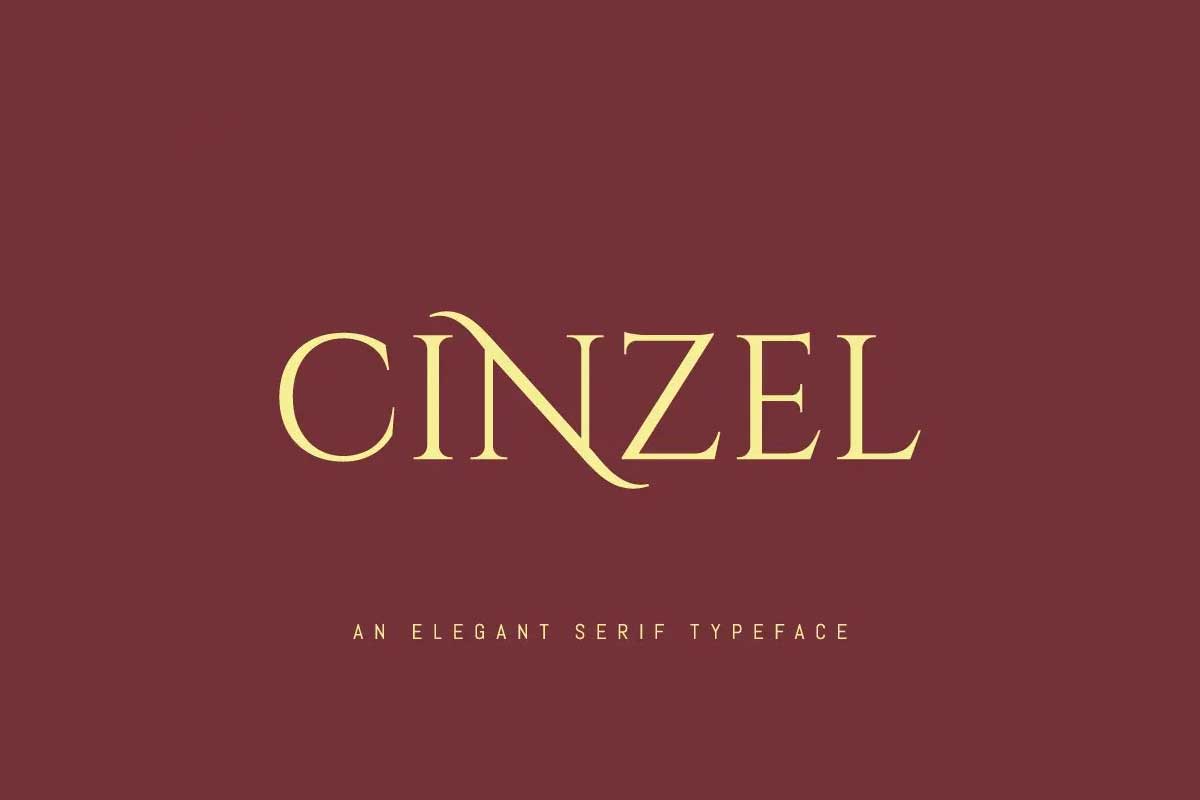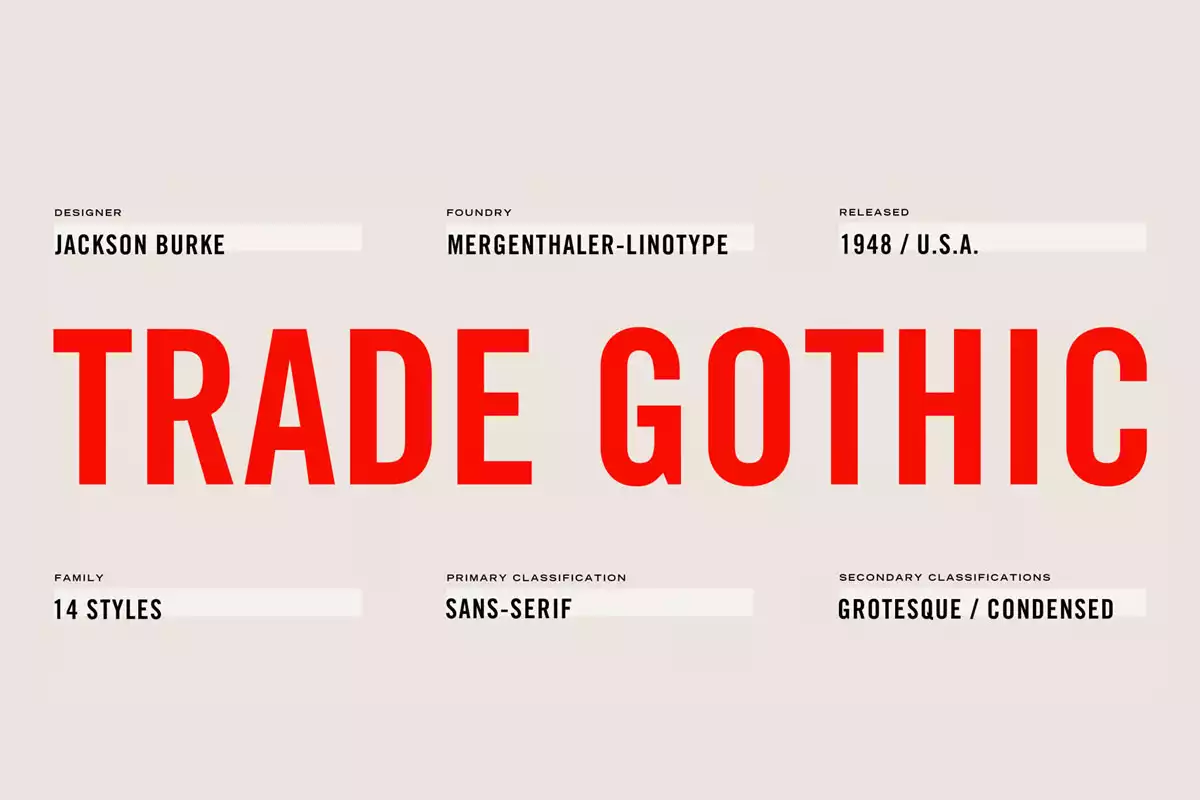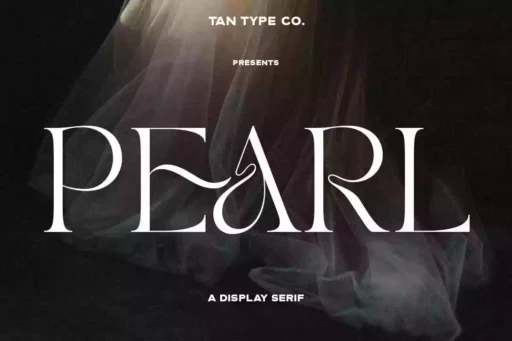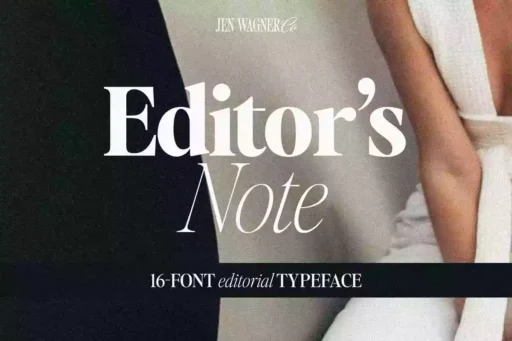Minion Pro is a serif typeface designed by Robert Slimbach, a very famous typographer and designer of typefaces, in 1990 for Adobe Systems. This stylish font takes its cue from the Renaissance typefaces of Claude Garamond and Robert Granjon, with touches of modernity.
The font “Minion” is known for its small size and versatility in various applications like body text in print and headlines on screens. It is a popular choice among designers, publishers, and typographers due to its legibility and classical appearance.
With balanced proportions, moderate contrast, and sturdy serifs, Minion Pro has an elegant and thoughtful appearance. Its letterforms show tiny calligraphic influence, and graceful curves and delicate brush strokes increase readability.

One of the characteristic features of Minion Pro is that its character set is extensive, and it has multiple weights, styles and glyph variations. Such versatility allows designers to work with the typeface to communicate notions of power and authority through its more dominant regular weight or a touch of sophisticated and elegant lightness with the italic style.
History
The inspiration for Slimbach’s design came from the late Renaissance period classic typefaces in the old serif style. The Renaissance period was noted for its elegant and attractive typefaces, which were also highly readable. Minion is derived from the traditional classification and naming of typeface sizes, a minion being a size between brevier and nonpareil. It approximates a modern 7-point lettering size.
Features
The Minion design’s lowercase characters use old-style glyphs in keeping with its Baroque typeface roots. These are most noticeable in the lowercase “g” and “q”. Subtle but essential details allow the upper and lower case to match well and sit comfortably beside each other. In both cases, the letter “z” has the tell-tale heavy dropped serif and matching line thicknesses. The strokes of the upper and lower case “y”, with its italicized narrowing of the secondary stroke, reinforce the strength of the primary stroke. Interestingly, the “Z” character has a thick stroke in perpendicularity to the “Y”, and though it may look a little odd on close examination, within a body of text, it enhances readability by providing good differentiation between adjacent letters.

The overall appearance of the Minion design is very much related to the appearance of mass-produced publications of the late Renaissance. Still, an added touch of classic typography design is impossible with older, inaccurate print machinery. This new take on those old styles has produced a crisper outline. The Minion typeface family has been expertly crafted to retain excellent readability by creating a print clarity that even the best Renaissance typographers could not manage.
The sheer number of existing versions demonstrates the popularity of this font. Adobe has created over one hundred and forty-three variations, ranging from basic styles to extended sweeping serif styles and even a set of ornamental characters that match the Minion design characteristics. In keeping with the spirit of healthy competition, many renowned types of foundries have produced some version of the Minion family at some point in the last 30 years.
Slimbach’s original Minion designs were updated with Cyrillic editions in 1992, and OpenType® versions were released in 2000.
Usage
The Minion design is an ideal typeface where high legibility levels are required. This makes it a perfect font for newspapers trying to fit as much copy onto every square inch of paper as possible. Its clarity helps make it readable for both young and old.
The Minion font family is particularly suitable for situations where instructions must be followed precisely, such as in critical applications where words cannot be misinterpreted. For instance, an air traffic control operator manual may benefit from using the Minion typefaces. The Minion font family is also a great choice for packaging and newsletters. Additionally, for those publishing mathematical formulaic content, incorporating the Minion math set may significantly enhance the usefulness of the Minion design.
Several universities, including Wake Forest, Brown, Purdue, and Trinity College Dublin, use Minion as their title and body text typeface. Wolfram Research’s Mathematica software logo uses this typeface, and John Benjamin’s Publishing Company uses Minion in its books’ body text.
Minion Pro Font Free Download

1. Who designed the Minion Pro font?
Minion Pro is a typeface designed by Robert Slimbach for Adobe Systems in 1990. It is justly famous for its classical grace, multifunctionality, and ease of reading.
2. Which weights and styles are present in Minion Pro?
Minion Pro Roman provides several weights, including Regular, Italic, Semibold, Bold, and Bold Italic, that allow different typographic expressions. Besides, it has small caps, old-style numbers, ligatures, and other typographic elements.
3. What other types of fonts are there, like Minion Pro?
Though Minion Pro is a genuinely original font, some other serif typefaces, such as Garamond, Adobe Caslon, and Georgia, share some of its features.

